Kakamega Forest
It’s 333km to Kakamega Forest, Kenya’s only remaining rainforest, and it takes between 6 and 7 hours to get there depending on traffic. But it’s worth the drive. Kakamega is well known for its huge number of birds (367 species) and butterflies (489 species) and even though we aren’t real twitchers, we do enjoy spotting animals, all animals, including birds and we were excited to go. The forest is only 238 square km and is at about 1500-1600m altitude. As it is a rain forest it gets a significant amount of rain, between 1200 and 1700mm a year, and the heaviest rains fall in April and May during the long rains.

the reason why soon there will be no rainforest left in Kenya – every person in Kenya (all 44 million of them) use on average 1.2kg of wood a day
We timed our stay well and were there during the long rains… but we were very lucky with the weather. All our hikes and runs stayed dry and the rain (and some hail!) only came down at night and when we were in the dining room. One night Jon got surprised with a heavy downpour on the way to the cottage as he went to pick up the wine for dinner. The heavens literally opened with no warning! But that was all the rain we had when outdoors.
The place we stayed at is called Rondo Retreat, a lovely place owned and run by the local nuns. We didn’t see any whilst we were there, but we did spot some on our drive in at the local church. We had our own little cottage, complete with veranda and of course a great fireplace for the cooler evenings. They even come and light the fire for you. Right outside our cottage were some huge trees where we spotted many colobus and blue monkeys.
We weren’t very good with spotting birds, but we managed to find (and identify!) some outside our cottage, in the grounds of the retreat and on our walks. They even have a nest with a pair of African Ground Eagles nesting in the gardens of the retreat. We saw them fly off, they are beautiful and huge!
Kakamega Forest is probably most famous for the Great Blue Turaco and we were very lucky to spot 5 of them on our sunrise walk, as well as 2 Black and White Casqued Hornbills. The great blue turacos live in small groups of 4 or 5 birds, so when you see one flying you can start looking around for the others. Makes it a little easier…
On 2 of our walks we took a guide. He was much better in finding birds and identifying them, even just by hearing them he could tell us which birds were around us (many), although we didn’t see all the ones we heard.
But we did find the snake that was harassing some Banded Prinias in a tree. We heard the noise the little birds were making as they were trying to chase away the danger and then got the binoculars out to see if we could find the intruder. The snake was very hard to spot, but eventually we did see it gliding up the tree. It looked like a branch, it was amazingly well camouflaged!
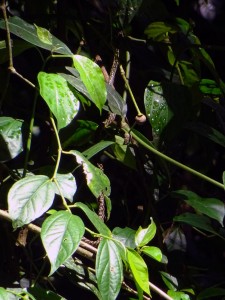
can you spot the tree snake? It is a rhamnophis aethiopissa, also known as a large-eyed green tree snake or a splendid dagger-tooth tree snake
The walk we saw most of our birds was the early morning sunrise walk to the highest hill (Lirhanda Hill) in the Forest. This hill is made of volcanic rock pushed up and due to the lack of soil has hardly any trees growing on it. Perfect for a lookout and a sunrise spot.
There is also a man-made cave halfway up Lirhanda Hill, hacked out many years ago when they were digging for gold. Two types of bats now call this cave home. One species is there during the day, the other at night.
In the whole weekend we only positively identified 11 types of different birds, a handful of plants and 3 types of monkeys. We might have to come back another time to see if we can add a few species to this list!

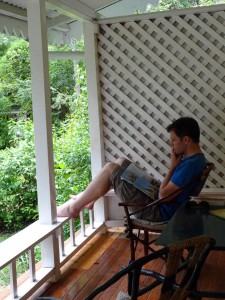

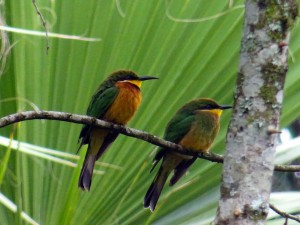
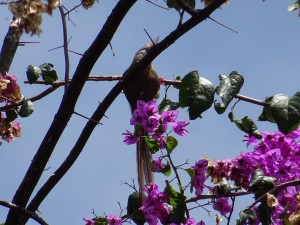
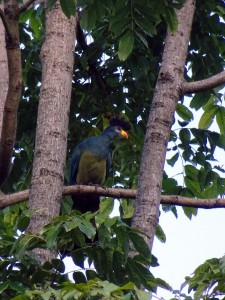
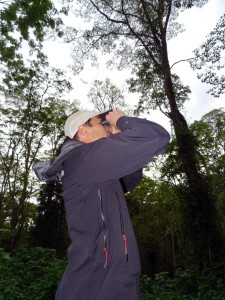
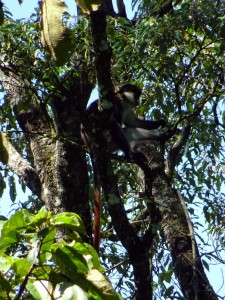
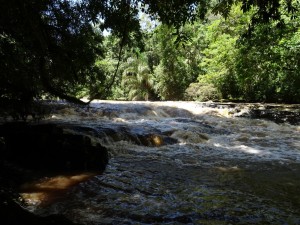

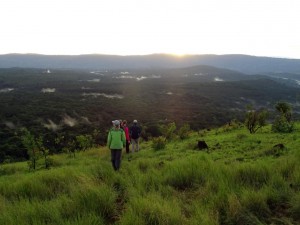
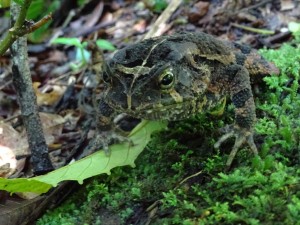

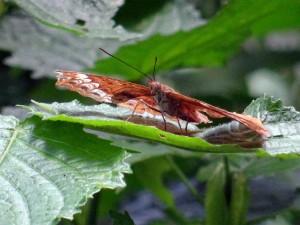
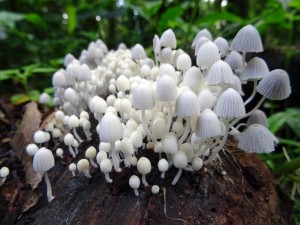
Kakamega Forest National Reserve is some of the best places to be if you are a fan of nature walks and birdwatching, not to mention there are lots of rare primates to find there too.